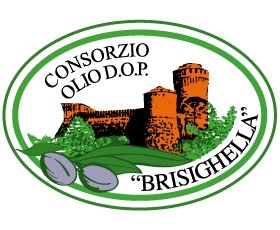
Consortium PDO oil Brisighella
Via Tebano, 45 – 48018 Faenza, RA
C.F.: 01358680393
Phone 0546 81103
Fax 0546 81497
info@brisighelladop.it
Just like good wine, Brisighella PDO extra virgin olive oil is a product that should be tasted carefully and methodically.
The figure of the extra virgin olive oil taster has become more popular in recent years thanks to the exponential growth of the world of food and wine.
Becoming a professional taster requires time, passion for this fine product and especially appropriate training, which is provided by numerous bodies, including Italy’s National Olive Oil Taster Organisation.
How do you taste Brisighella PDO extra virgin olive oil?
Sommeliers analyse two sensory aspects when tasting an oil: the nose and the palate.
By examining the aromas and flavours of the oil, we can identify possible defects and categorise the oil.
A blue (or dark-coloured) glass is used when tasting the oil to prevent the taster’s judgement being compromised by the appearance, which could create unnecessary bias.Other tools provided are the tasting/profile sheet, a pen, some small dishes with slices of apple and/or rusks, a glass of water and a spittoon.
The tasting process is carried out following these steps:
During the entire tasting process, the taster will use the tasting sheet provided to note all the sensations given by the sample being analysed.
Just like good wine, Brisighella PDO extra virgin olive oil is a product that should be tasted carefully and methodically.
The figure of the extra virgin olive oil taster has become more popular in recent years thanks to the exponential growth of the world of food and wine.
Becoming a professional taster requires time, passion for this fine product and especially appropriate training, which is provided by numerous bodies, including Italy’s National Olive Oil Taster Organisation.
How do you taste Brisighella PDO extra virgin olive oil?
Sommeliers analyse two sensory aspects when tasting an oil: the nose and the palate.
By examining the aromas and flavours of the oil, we can identify possible defects and categorise the oil.
A blue (or dark-coloured) glass is used when tasting the oil to prevent the taster’s judgement being compromised by the appearance, which could create unnecessary bias.Other tools provided are the tasting/profile sheet, a pen, some small dishes with slices of apple and/or rusks, a glass of water and a spittoon.
The tasting process is carried out following these steps:
During the entire tasting process, the taster will use the tasting sheet provided to note all the sensations given by the sample being analysed.